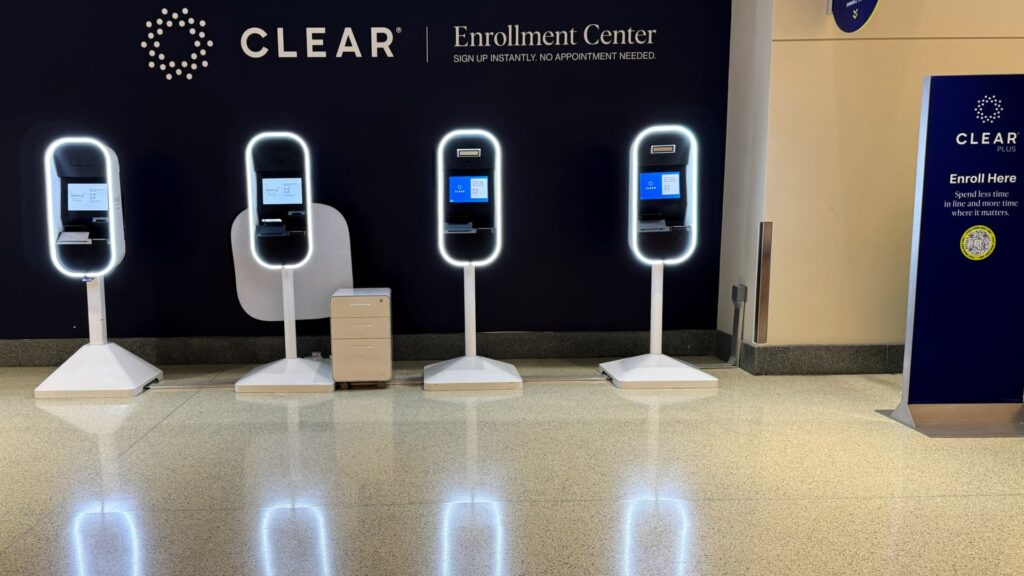Clear and its dedicated security lines have become a common sight across major airports throughout the U.S. and globally in cities including Amsterdam, Montreal and Rome.
Caryn Seidman Becker had a vision to transform the security part of the travel experience when she bought the company now known as Clear out of bankruptcy alongside co-founder Ken Cornick in 2010, aiming to make the experience easier, with less friction for travelers while also making the security process more secure and safe.
But as identity and security challenges grow in an age of AI, deepfakes and bad actors, Seidman Becker sees plenty of room to grow beyond the airport.
“One of the things I’ve said at Clear for quite a while is we want to go from 12 times a year to 12 times a day,” she told CNBC’s Julia Boorstin in a recent interview for the CNBC Changemakers Spotlight series. “That was the average [number of] times that travelers were using it in the early days, and I do think that there are so many opportunities to use it in your daily life today and where we can go,” she said.
Seidman Becker was named to the 2025 CNBC Changemakers list.
One of the future areas of growth she sees for the company is providing security around legal document signature. For decades, that role has been served by notaries, but in a post-Covid world where digital signatures have become more common, concerns over who is actually signing something are becoming an issue.
“Really knowing the identity behind the document and knowing who you are and what you should have access to — it’s the need to strengthen security,” Seidman Becker said.
CLEAR Secure enrollment terminals are shown near a TSA security location at Midway Airport in Chicago, Illinois, August 23, 2024.
Mike Blake | Reuters
In April, Clear signed a partnership with Docusign, allowing users to link their biometrically verified information with their accounts. That way, signers can know their information is secure while those receiving the documents know who truly signed it.
Seidman Becker says many of the issues that Clear has tackled related to identity fraud at the airport are increasingly becoming a risk focus inside the corporate enterprise.
“Criminals aren’t just hacking on, they’re logging on,” she said. “It’s easier than ever to use fake credentials to get in the front door,” she said, noting the increasing number of incidents involving new employees faking their identities and providing fraudulent documents, and other cybersecurity attacks based around infiltrating company accounts and networks.
That’s leading Clear to new opportunities where its technology can be used to prove people are who they say they are. That includes Uber, which is using Clear for rider verification, and access management software company Okta, enhancing authentication through Clear’s biometric protection.
In June, Clear partnered with hiring software firm Greenhouse to let job candidates verify who they are, and at the same time help employers speed up the applicant to onboarding process.
“You can onboard from an interview perspective, and make sure that you’re bringing on the person who they say they are, and then when they show up on day one, they’re actually the person that you hired,” Seidman Becker said.
By 2028, up to 25% of job applicants could be fake, using profiles generated by deepfakes and identity spoofing, according to Gartner data cited by Clear and Greenhouse in the partnership announcement.
Seidman Becker said it all comes back to the idea that “an ID document is not an identity,” and is now being amplified further by the rise of AI.
“Synthetic identities and deep fakes are easier and more prevalent than ever,” Seidman Becker said. “From a solutions perspective, it’s why you need a multi-layered approach to identity that’s not just facial.”
“You can’t just take a picture of a face and assume that it is that person, it’s no longer applicable,” she said.
As the future of identity verification continues to evolve, Seidman Becker said that one of the core values at the heart of the company is “embrace change.”
“I think change is the only thing that’s constant, and when you accept that, you’re constantly making decisions, looking to the future, and knowing that you have to evolve,” she said. “It’s not a choice.”
Seidman Becker said that while the company started with a view of transforming the airport security line, her job as a leader is “to look forward, that the iPod could become the iPhone.”
“If you stay still as a company, you will not be here,” she said. “You’ve seen so many companies become irrelevant, and to know that is possible keeps you moving forward. It’s a leader’s job to look around corners.”
Watch the full Changemakers Spotlight video above for more from Seidman Becker on the future of security tech.


